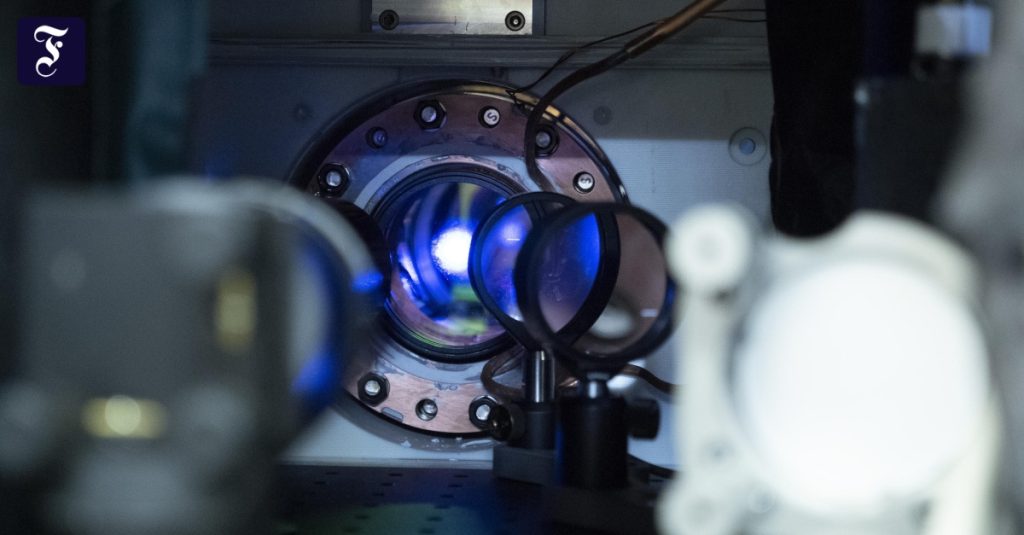DrTime does not always pass with the same speed everywhere. This is one of the strange results of the theory of relativity. Not only do clocks move slower than stationary clocks. Gravity also affects the passage of time: clocks run slower in the immediate vicinity of a massive object than at a certain distance. Physicists have been able to experimentally confirm this prediction of general relativity several times over the past few decades by bringing accurate clocks to high speeds or altitudes using aircraft or rockets, or by locating their experiments on mountains or towers. Now, researchers at the National Institute of Standards and Technology in Boulder, Colorado, have subjected the effect of gravitational time-lengthening, or time-dilation, to the most accurate test yet. I compared the rate difference between two horizontally arranged clocks on a millimeter scale.
general theory of relativity Albert Einstein Published in 1915, it describes gravity as a result of the curvature of space and time. The massive objects will then distort the four-dimensional structure of spacetime – similar to the way a heavy ball deforms a rubber membrane. The result: not only are the trajectories of all objects as well as the trajectories of light rays subject to the curvature of spacetime, time itself is also subject to the force of gravity. These relative effects must be taken into account for accurate positioning using satellite navigation.
Optical clocks ticking every second
If you want to measure small time differences, you need a chronometer as accurate as possible. However, even the best Swiss watches do not operate with sufficient accuracy to demonstrate time dilation in gravitational fields. Such experiments became possible only with the development of atomic clocks in the 1960s, which were determined by microwave oscillations of a cesium atom. In 1976, an atomic clock was launched on a rocket (Gravity Probe Experiment) at an altitude of about 10,000 km. The time difference compared to an identical atomic clock on Earth was one second in 73 years.
Time measurements at significantly lower altitudes confirmed Einstein’s predictions. Two years ago, Japanese researchers subjected gravitational time dilation to the most accurate test yet on the 450-meter Tokyo Skytree TV tower. On average, the atomic clock was four nanoseconds faster per day than a similar atomic clock on Earth. But what about smaller height differences – in the range of centimeters or millimeters?
To be able to gauge the effect of time dilation and potential skew here, the clocks have to be very accurate – cesium clocks are no longer enough. So one turns to optical atomic clocks, where light oscillates at a much higher frequency, which affects the accuracy of the rate. In fact, an optical chronometer would only be wrong by one second in billions of years. For comparison: the cesium clock “only” ticks 1 second for about 30 million years.
Relativity meets quantum physics
Researchers in Boulder currently used the best optical atomic clock for their measurements. It is more accurate than a cesium clock by a factor of fifty. About a hundred thousand frozen strontium atoms are suspended in an optical retina structure by cross-cutting lasers and excited by an extremely stable red laser beam. If the atoms and the external laser field oscillate simultaneously, the frequency of the light emitted by the atoms and therefore the atomic strontium clock rate is measured. Since there are several thousand clocks ticking simultaneously, a much higher measurement accuracy is achieved than if one were working with a single ion.
Researchers led by Jun Ye raised some of the atoms trapped in the optical lattice by one millimeter, creating a kind of second strontium atomic clock. The researchers were able to show that atoms slightly higher beat the clock a little faster than lower atoms. The frequency difference was noticeable in the nineteenth decimal place, As Jun Ye and colleagues write in Nature.
This small effect has no effect on the everyday world. However, researchers see possible applications in geodesy. Accurate chronometers can be used to create precise elevation profiles of mountains or to accurately measure ocean depths. Accurate atomic strontium clocks can also be used to predict earthquakes.
With their measurements, Ye researchers have also come close to seeing: It will be possible to simultaneously test predictions of the general theory of relativity and quantum physics at the same time with unprecedented accuracy. In this way one can check how the quantum mechanical matter waves of atoms behave in curved space. To do this, scientists will have to accurately determine the effect of gravity on time by a factor of ten.

“Total coffee aficionado. Travel buff. Music ninja. Bacon nerd. Beeraholic.”








More Stories
Exploding Fireball: Find the meteorite fragments
Neuralink's competitor lets blind people see again with an implant
A huge meteorite has hit Earth – four times the size of Mount Everest